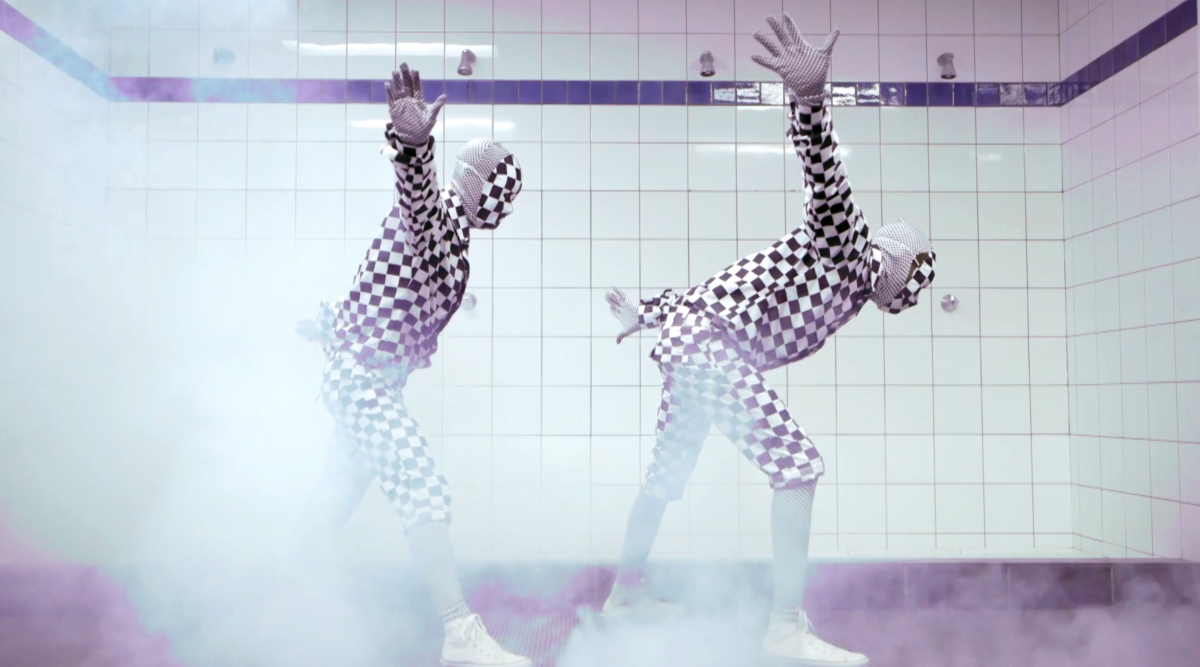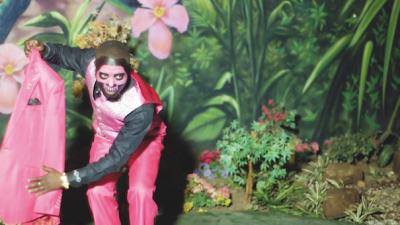
Time and Cultures Collide
Smiso Zwane, aka the rapper Okmalumkoolkat, channels his experiences from South Africa into his music with ease. He looks inward, back into the past, and forward to an imaginary future. In the video «Allblackblackkat» the effect is achieved through mixing a variety of dreamlike elements. Time and cultures collide. From the Norient book Seismographic Sounds (see and order here).
«Tall black cat with a bloody knife. Two live chickens. Sacrifice. Shise impepho (burn incense) then we levitate.» The start of Zwane’s spiritual poem is razor sharp. He mixes his mother tongue of Zulu with slang, switches back and forth from English to Afrikaans, riffing off spiritual imagery. The video is reimagining a traditional Zulu ceremony that Zwane experienced growing up in Umlazi, Durban. With the words «future Mfana, future black» he shouts out the name of one of his aliases (Future boy) to assert the arrival of a newness in culture. Two masked figures lead him to a pool and dip him into water. Later, we see blood from a freshly sacrificed chicken dripping down his face. Again, the sacrifice and cleansing ritual refers to a funeral ceremony from Zwane’s past.

A mysterious and somewhat menacing character is introduced in a pink and black suit with matching paint on his face. He performs an elegant dance, which emphasizes his style. The man is a reference to South African sapeur-like Swenka culture, a group of fashionable working-class Zulu men that originated in Johannesburg around the 1920s. On weekends, they were known to take part in competitions in which style and attitude were celebrated. Swenka has recently been modified into the Zulu word «Umswenko» and made popular in youth culture by Zwane. In an interview with music website Noisey, Zwane said, «Umswenko is a lifestyle that we, the youth of South Africa, are all about. It’s based on excellence and random acts of nation-building [coming together as South Africans despite our differences] in a fun, responsible way. It’s all about boosting the confidence of our youth through knowledge of self and global awareness simultaneously.»
Checkered black-and-white-painted pantsula dancers join in as the beat kicks in. Pantsula is a type of dance that emerged in the townships as a form of protest during the 1950s and 1960s. It grew in popularity along with the growth of kwaito music in the 1990s. In the video, their high-energy dancing builds up to the ritualistic ceremony. They weave back and forth between the ritual and juxtapose the past with the present. The figures are faceless, such as those often found in a dream.
Zwane’s translation of all these ideas of childhood memory, history, ritual and tradition into art is a rarity in terms of South African hip hop music videos. Usually they are more obsessed with emulating American bling culture. The visuals do not need to be dissected as a literal translation of the lyrics, but rather they bring together elements of culture important to Zwane’s own reality and fuse that into dreamlike storytelling.
This video is part of the Norient exhibition «Seismographic Sounds» and this commentary was published first in the correspondent Norient book.
Biography
Shop

Published on December 10, 2015
Last updated on April 11, 2024
Topics
From breakdance in Baghdad, the rebel dance pantsula in South Africa to the role of intoxications in club music: Dance can be a form a self-expression or self-loosing.
From Self-Orientalism in Arab music to the sheer exploitation of Brazilian funk music by acclaimed artists: how exotica examine aesthetics playing with the other and cultural misunderstandings.
Watch how cutting-edge music from Brazil to Singapore is represented in moving images.
From Korean visual kei to Brazilian rasterinha, or the dangers of suddenly rising to fame at a young age.
